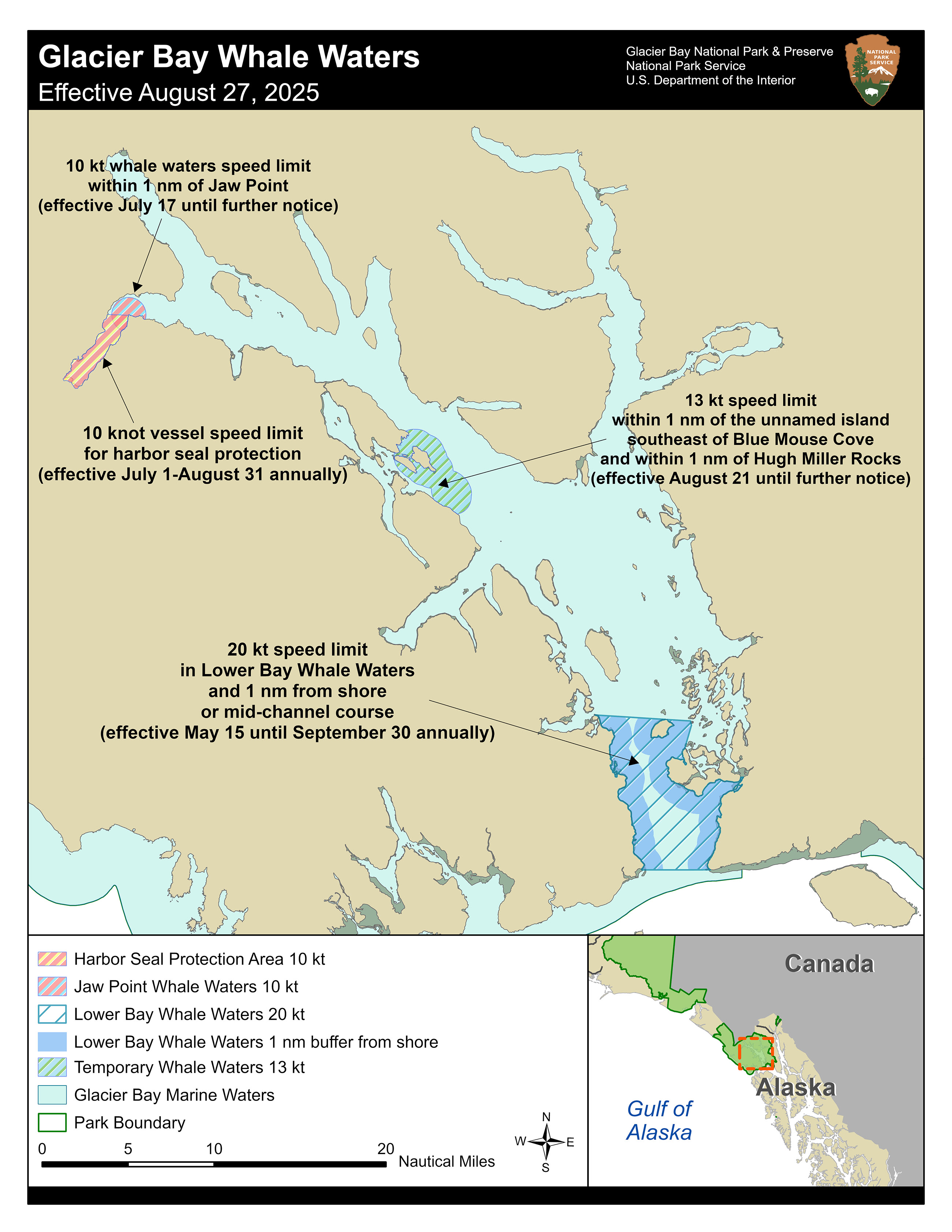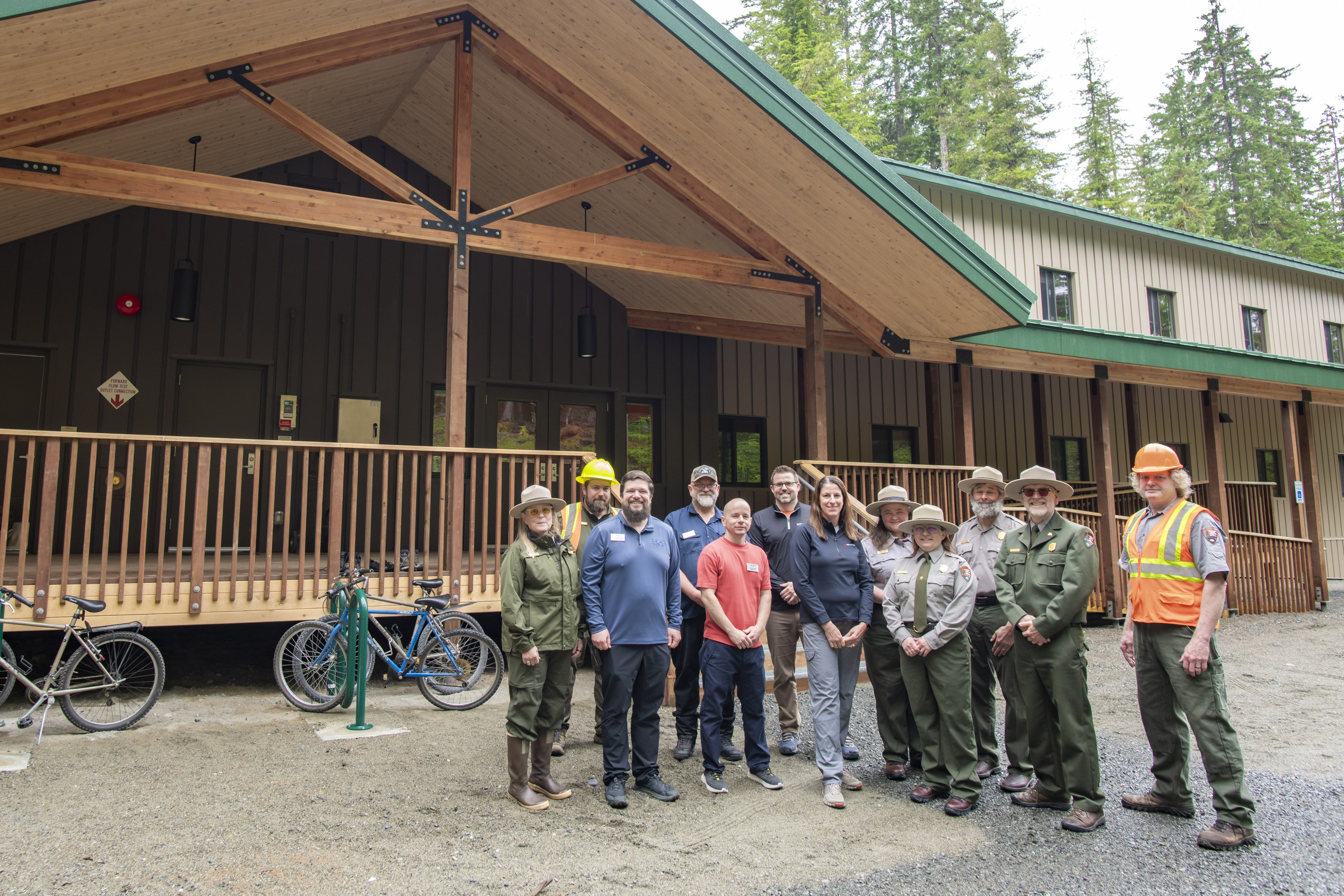Glacier Bay National Park & Preserve
Covering 3.3 million acres of rugged mountains, dynamic glaciers, temperate rainforest, wild coastlines and deep sheltered fjords, Glacier Bay National Park and Preserve is known as Homeland to the Huna and Yakutat Lingít, and is a highlight of Alaska's Inside Passage. From sea to summit, Glacier Bay offers limitless opportunities for adventure and inspiration.
Map showing location of park.

Whale Waters Update for Glacier Bay Effective August 27, 2025
Glacier Bay announced today that the vessel speed restriction of 13-knots through the water is being removed in Lower Glacier Bay, due to a decrease in the number of humpback whales in the area. In the Lower Bay there is a 20-knot speed limit for all vessels May 15-September 30th annually. The 13-knot speed limit in and around Blue Mouse Cove and Hugh Miller Rocks, implemented on August 21st, will remain in effect. The 10-knot speed limit around Jaw Point, implemented on August 9th, will remain in effect. These updated operating requirements are effective from 5 AM Wednesday August 27thth until further notice.

Whale Waters Update for Glacier Bay Effective August 21, 2025
Glacier Bay National Park and Preserve announced today that the 13-knot vessel speed limit is being removed around Gloomy Knob and Tidal Inlet due a decrease in the number of humpback whales feeding consistently in the area. New temporary whale waters with a 13-knot vessel speed limit are being implemented in and around Blue Mouse Cove and Hugh Miller Rocks to protect five or more whales feeding in the area. These updated operating requirements are effective from 5 AM Thursday August 21st until further notice.

Whale Waters Update for Glacier Bay Effective August 9, 2025
Glacier Bay National Park and Preserve Acting Superintendent Joni Seay announced today that the 13-knot vessel speed limit is being removed around South Sandy Cove and Garforth Island. Recent observations reveal that very few humpback whales are feeding consistently in these areas. New 13-knot temporary whale waters are being implemented around Gloomy Knob and Blue Mouse Cove to protect at least 10 whales feeding in the area.

New housing project completed in Glacier Bay with Great American Outdoors Act Funding
Glacier Bay National Park and Preserve recently completed a $19 million construction contract funded by the Great American Outdoors Act (GAOA) Legacy Restoration Fund. The project, a critical part of addressing deferred park maintenance and repair needs, dramatically improved the housing options for the concession employees who support visitor services in Bartlett Cove, including lodging and day tour operations.

Whale Waters Update for Glacier Bay Effective July 31, 2025
Glacier Bay National Park and Preserve announces that the 13-knot vessel speed limit is being removed around Lone Island, Geikie Rock, Hugh Miller Rocks, and Blue Mouse Cove. Recent observations reveal that few humpback whales are feeding consistently in this area. New temporary whale waters are being implemented around South Sandy Cove and Garforth Island with a 13-knot speed limit.
Photo by NPS / T. VandenBerg
Photo by NPS Photo
Photo by NPS Photo / B. Whitehead
Photo by NPS Photo / C. Behnke
Photo by NPS Photo
Photo by NPS photo